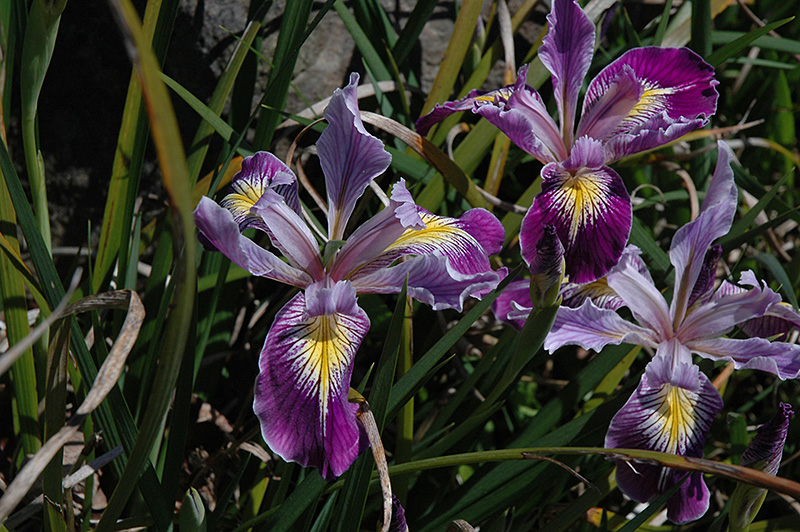Find Plants
Plant Height: 8 inches
Flower Height: 12 inches
Spacing: 10 inches
Sunlight:
![]()
![]()
Hardiness Zone: 7
Other Names: Oregon Iris, Pacific Coast Iris
Description:
A lovely variety with flowers that are usually blue to deep purple, sometimes white to cream; tough, grassy foliage tends to grow higher than flowers; blooms in late spring; best in full sun and moist soil but very adaptable
Ornamental Features
Tough Leaf Iris has masses of beautiful purple flag-like flowers with white overtones and yellow streaks at the ends of the stems in late spring, which are most effective when planted in groupings. The flowers are excellent for cutting. Its grassy leaves remain green in color throughout the season.
Landscape Attributes
Tough Leaf Iris is an herbaceous perennial with tall flower stalks held atop a low mound of foliage. Its relatively fine texture sets it apart from other garden plants with less refined foliage.
This plant will require occasional maintenance and upkeep, and should be cut back in late fall in preparation for winter. Deer don't particularly care for this plant and will usually leave it alone in favor of tastier treats. It has no significant negative characteristics.
Tough Leaf Iris is recommended for the following landscape applications;
- Mass Planting
- General Garden Use
Planting & Growing
Tough Leaf Iris will grow to be about 8 inches tall at maturity extending to 12 inches tall with the flowers, with a spread of 12 inches. When grown in masses or used as a bedding plant, individual plants should be spaced approximately 10 inches apart. It grows at a medium rate, and under ideal conditions can be expected to live for approximately 10 years. As an herbaceous perennial, this plant will usually die back to the crown each winter, and will regrow from the base each spring. Be careful not to disturb the crown in late winter when it may not be readily seen!
This plant does best in full sun to partial shade. It is quite adaptable, prefering to grow in average to wet conditions, and will even tolerate some standing water. It is not particular as to soil type or pH. It is somewhat tolerant of urban pollution. This species is not originally from North America. It can be propagated by division.
Disclaimer - This Plant Finder tool is an online resource representing many of the varieties that we carry over the course of the season, and is intended for informational purposes only. Inventory varies seasonally, so we cannot guarantee that every plant will be in stock at all times - please contact the store directly for availability. It does not include our entire inventory of plants, so be sure to visit our store to see varieties that may not be represented on this list.

